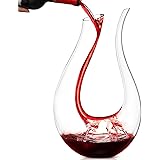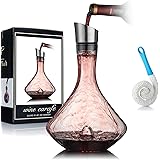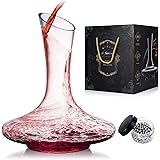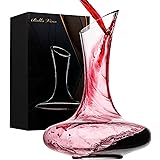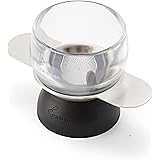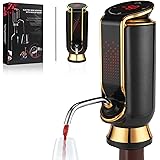How to Master Ordering Wine at a Restaurant Like a Pro
Ever found yourself staring at a restaurant wine list, a slight panic bubbling up, unsure how to proceed without looking completely lost? You’re not alone. The video above perfectly captures that all-too-common scenario, where the simple act of ordering a bottle of wine can feel like a high-stakes performance.
Many of us have been in that position, perhaps on a special date or a business dinner, wanting to project an air of confidence but secretly wishing we had a cheat sheet. The good news? You absolutely can navigate the wine ordering process with ease. It’s less about being a connoisseur and more about understanding a few simple steps. This guide will expand on the video’s excellent advice, ensuring your next restaurant experience is smooth, sophisticated, and genuinely enjoyable.
Navigating the Wine List Like a Pro
The first step in ordering wine at a restaurant is to choose your bottle. This can feel daunting, especially with extensive wine lists. However, a structured approach can make it much simpler. Here’s how to confidently make your selection:
- Look for Familiar Names: As the video suggests, if you know a particular brand or estate you enjoy, like “Decoy” Cabernet Sauvignon, go for it! Familiarity breeds confidence.
- Consider the “By the Glass” Option: This is a brilliant tip from the video. If you’re completely new to wine, look at the “wines by the glass” section. These are usually popular, approachable selections. Don’t be shy to ask your server if you can sample two different options to help you decide. This shows curiosity, not ignorance.
- Think About Food Pairings (Simply): While complex wine pairing is an art, a few basic rules can help. Generally, red wines pair well with red meats, and white wines with fish or poultry. Lighter-bodied wines often go with lighter dishes, while fuller-bodied wines complement richer foods. Sparkling wines are incredibly versatile.
-
Understand Basic Grape Varietals: Knowing a few common grape types can be a lifesaver.
- Cabernet Sauvignon: Often full-bodied, dark fruit flavors, a classic red.
- Pinot Noir: Lighter red, earthy, cherry notes.
- Chardonnay: Versatile white, can be buttery (oaked) or crisp (unoaked).
- Sauvignon Blanc: Crisp, acidic white with citrus and grassy notes.
- Rosé: Pink wine, typically dry and refreshing, perfect for warm weather or lighter meals.
- Don’t Be Afraid to Ask Your Server or Sommelier: These professionals are there to help! You can give them some simple guidelines: “I’m looking for a full-bodied red that’s not too dry,” or “We’re having seafood, do you have a crisp white wine recommendation under $70?” This demonstrates that you know what you like, even if you don’t know the exact bottle.
The Confirmation Ritual: More Than Just a Label Check
Once you’ve made your selection, the next step involves a bit of restaurant theater, as highlighted in the video. When the server brings the bottle to your table, they present it to you for a specific reason: to ensure it’s the correct wine you ordered.
Simply verify the following:
- The Winery Name: Is it the brand or estate you asked for (e.g., Decoy)?
- The Grape Varietal: Is it the correct grape (e.g., Cabernet Sauvignon)?
- The Vintage (Year): This is less critical for casual drinkers but good to note. Sometimes, if a specific vintage isn’t available, the server might have informed you, or they may offer a different year of the same wine.
A simple “Yes, that’s it, thank you” is all that’s required. There’s no need for elaborate inspections at this stage. Then, as mentioned, the server will open the bottle.
What About the Cork?
The video humorously mentions the cork. Often, the server will place the cork on the table beside you. This isn’t for sniffing, as the speaker points out! Its primary purpose is to prove the bottle was sealed. For those interested, a cork can sometimes indicate if a wine is “corked” (meaning it has been contaminated by a chemical compound that makes it smell musty, like wet cardboard). But this is usually detected during the taste test, not by sniffing the cork itself. So, feel free to ignore the cork, or simply place it gently on the table.
Mastering the Taste Test: Swirl, Sniff, Sip, Smile
This is arguably the most important, and often intimidating, part of ordering wine at a restaurant. The server pours a small amount into your glass – typically just an ounce or two – for you to taste and approve. Here’s how to handle it with grace and confidence:
- The Swirl: Gently pick up your glass by the stem. Give the wine a soft swirl. This aerates the wine, helping it release its aromas.
-
The Sniff: Bring the glass to your nose and take a sniff. What are you looking for? You’re primarily checking for “faults” or off-odors, not just whether you like the smell. Common faults include:
- Musty or Damp Cardboard Smell: This indicates a “corked” wine.
- Vinegar Smell: Sign of oxidation, meaning the wine has gone bad.
- Sulphur or Burnt Rubber: Can indicate a problem with the winemaking process.
- The Sip: Take a small sip of the wine. Let it roll around your mouth for a few seconds. Again, you’re checking for faults, not just personal preference. Does it taste sour like vinegar? Does it have that musty, corked flavor? Does it taste “off” or simply unpleasant in a way that suggests spoilage rather than just a taste you don’t prefer?
-
The Verdict:
- If it’s good: A simple nod and “It’s perfect, thank you” or “It’s lovely” is all you need to say. The server will then pour wine for the rest of the table.
- If it’s faulty: This is rare, but it happens. If you genuinely believe the wine is flawed (not just that you don’t like it), politely inform the server. “I’m sorry, I think this wine might be corked,” or “This tastes off to me.” A good restaurant will replace it without question.
Remember, this tasting ritual is about confirming the wine is sound, not whether it’s your absolute favorite. Your confidence here comes from understanding the process, not from being a wine expert.
Beyond the Basics: Building Your Wine Confidence
While the steps above will certainly make you look like you know what you’re doing, true confidence in ordering wine comes from genuine experience and a willingness to explore. Here are a few additional tips:
- Ask for Recommendations: Don’t underestimate the expertise of your server or sommelier. They know the wine list intimately and can guide you based on your preferences, budget, and meal choice.
- Try Something New: While it’s great to have go-to wines, occasionally stepping outside your comfort zone can introduce you to new favorites and expand your palate.
- Educate Yourself (Bit by Bit): You don’t need to read encyclopedias. Small bits of information, like understanding regional differences or different winemaking styles, can enhance your appreciation.
- Focus on Enjoyment: Ultimately, wine is meant to be enjoyed. The best wine is the one you like to drink. Don’t let the etiquette or perceived complexity detract from the pleasure.
By following these steps, you’ll not only master the art of ordering a bottle of wine at a restaurant but also elevate your entire dining experience. Cheers to confident sips and memorable meals!


